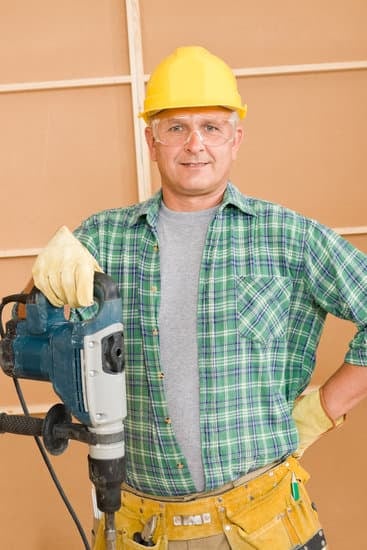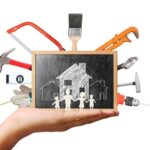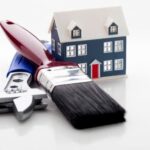Are you wondering how to deduct rental home improvements on your taxes? As a landlord, understanding the tax implications of improving your rental property is crucial for maximizing your tax benefits. From identifying qualifying home improvements to utilizing the Section 179 deduction, there are various strategies to consider when it comes to claiming deductions for rental property improvements.
Identifying the home improvements that qualify for tax deductions is an essential step in maximizing your tax benefits as a landlord. It’s important to keep detailed records of all the improvements made to your rental property, as they can potentially be deducted from your taxable income. Depreciation also plays a significant role in determining the impact of rental home improvements on your taxes.
In addition to understanding depreciation, landlords should also consider utilizing the Section 179 deduction for immediate tax benefits. Knowing how to report rental home improvements on your tax return and avoiding potential tax pitfalls are essential for maximizing your tax savings. Seeking professional advice from a tax accountant or real estate tax specialist can provide valuable insights into optimizing your rental property improvement deductions.
Identifying Qualifying Home Improvements
When it comes to deducting rental home improvements on your taxes, it is important to understand what types of home improvements qualify for tax deductions. Here are some qualifying home improvements that you can deduct on your taxes:
- Structural Improvements: Any renovations or improvements that are considered to be permanently attached to the property, such as a new roof, HVAC system, or plumbing upgrades.
- Energy-Efficient Upgrades: Making environmentally friendly upgrades to your rental property, such as installing solar panels, energy-efficient windows, or doors may also qualify for tax deductions.
- Safety and Accessibility Features: Adding features such as wheelchair ramps, wider doorways, or handrails for elderly tenants may also qualify for tax deductions.
It is important to note that regular repairs and maintenance do not qualify as deductible home improvements. These would include things like painting, fixing leaks, or replacing broken appliances. Keeping detailed records of all the qualifying home improvements is crucial in order to claim them on your tax return.
This includes receipts, invoices, and any other relevant documentation that proves the cost and nature of the improvements made on the rental property. Keeping organized records will make it much easier when it comes time to report these improvements on your tax return.
Keeping Detailed Records for Tax Purposes
Why Detailed Records Are Important
When it comes to deducting rental home improvements on your taxes, keeping detailed records is absolutely essential. Without proper documentation, you may not be able to prove the cost and nature of the improvements, which could result in denied deductions or even audits from the IRS. This is why it’s crucial to maintain thorough records of all home improvement expenses, including receipts, invoices, contracts, and any other relevant documentation.
What Records to Keep
So, what exactly should you be keeping track of when it comes to rental home improvements? Any expenses related to the improvement or repair of your rental property should be documented. This includes materials, equipment rentals, contractor fees, and even permit costs.
You’ll also want to make note of the specific improvements made and the dates they were completed. It’s a good idea to take before and after photos as well, so you have visual evidence of the work that was done.
The Importance of Organization
In addition to collecting all necessary documentation, it’s important to stay organized with your records. Create a system for filing and categorizing receipts and invoices so that everything is easily accessible come tax time.
Consider using a digital filing system or accounting software to keep everything in one place and reduce the risk of losing important paperwork. By staying organized with your records, you’ll have peace of mind knowing that you’re prepared for any potential tax inquiries regarding your rental home improvements.
Depreciation and Its Impact on Rental Home Improvements
Depreciation is a key factor to consider when deducting rental home improvements on your taxes. When you make improvements to your rental property, the IRS considers these as capital expenses, which means they cannot be deducted in the year they were incurred. Instead, you can recover the cost of these improvements over time through depreciation.
Here are some important points to understand about depreciation and its impact on rental home improvements:
1. Depreciation Schedule: The IRS requires you to depreciate the cost of improvements over a specified number of years, known as the “useful life” of the property. For residential properties, the useful life is 27.5 years.
2. Calculating Depreciation: To calculate depreciation for your rental home improvements, you will need to determine the cost basis of the improvement (which includes both material and labor costs) and divide it by the applicable recovery period.
3. Tax Benefits: While depreciation may not provide an immediate tax benefit like a regular deduction, it can still reduce your taxable income and increase your cash flow by lowering your overall tax liability.
It’s important to consult with a tax professional or accountant who specializes in real estate taxation to ensure you are accurately calculating depreciation for your rental home improvements and maximizing your tax benefits.
Overall, understanding how depreciation impacts rental home improvements is crucial for landlords looking to reduce their tax burden and increase their cash flow from rental properties. By keeping detailed records, utilizing the appropriate depreciation schedules, and seeking professional advice, you can ensure that you are making the most of tax deductions for your rental property improvements while staying compliant with IRS regulations.
Utilizing the Section 179 Deduction for Immediate Tax Benefits
If you’re a rental property owner looking to maximize your tax benefits, utilizing the Section 179 deduction for immediate tax benefits can be a valuable strategy. The Section 179 deduction allows you to deduct the full cost of qualifying home improvements in the year they are made, rather than depreciating them over several years. This can provide you with immediate tax savings and free up more cash flow for other investments or expenses.
To take advantage of the Section 179 deduction, it’s important to identify qualifying home improvements that meet the IRS criteria. Qualifying improvements typically include items like new appliances, HVAC systems, roofing, flooring, and other structural modifications that enhance the property’s value and longevity. It’s essential to keep detailed records of these improvements, including receipts and invoices, to support your deduction claims in case of an IRS audit.
When reporting rental home improvements on your tax return, you’ll need to use IRS Form 4562 to claim the Section 179 deduction. This form allows you to list all qualifying home improvements and calculate the total deduction amount for the current tax year.
Be sure to consult with a tax professional or accountant if you have any questions about claiming the Section 179 deduction or need assistance navigating the complex tax rules related to rental property ownership. By following these guidelines, you can take advantage of the Section 179 deduction for immediate tax benefits and maximize your overall tax savings as a rental property owner.
How to Report Rental Home Improvements on Your Tax Return
Reporting rental home improvements on your tax return is an important step in maximizing your tax benefits as a property owner. By properly documenting and reporting your home improvements, you can potentially reduce your taxable income and increase your tax savings. Here are some key considerations for reporting rental home improvements on your tax return.
Keep Detailed Records
One of the most important aspects of reporting rental home improvements on your tax return is to keep detailed records of all the work done and expenses incurred. This includes invoices, receipts, contracts, and any other relevant documentation. The IRS may require this information to verify the cost and nature of the improvements, so maintaining thorough records is crucial.
Form 1040 Schedule E
When it comes to reporting rental property income and expenses, including home improvements, Form 1040 Schedule E is commonly used. This form allows you to report rental income, as well as deductions for expenses such as maintenance, repairs, and improvements. Be sure to accurately fill out this form and include all eligible expenses related to your rental property.
Consult a Tax Professional
Navigating the complexities of tax laws and regulations can be challenging, especially when it comes to deducting rental home improvements. It’s advisable to seek the expertise of a qualified tax professional who can provide guidance on how to deduct rental home improvements on your taxes in accordance with current laws. A knowledgeable professional can help you maximize your tax savings while ensuring compliance with IRS requirements.
By following these guidelines and seeking professional advice when necessary, you can effectively report rental home improvements on your tax return and take advantage of potential tax benefits. Remember that every situation is unique, so it’s important to tailor your approach based on the specifics of your rental property and financial circumstances. Taking the time to accurately report home improvements can lead to significant tax savings in the long run.
Potential Tax Pitfalls to Avoid When Deducting Home Improvements
When deducting home improvements on your taxes, there are some potential tax pitfalls that you should be aware of in order to avoid any issues with the IRS. One common pitfall is trying to deduct repairs as improvements. It’s important to distinguish between the two, as only home improvements can be deducted on your taxes. Repairs, such as fixing a leaky faucet or replacing a broken window, are considered routine maintenance and cannot be deducted.
Another pitfall to avoid is not keeping detailed records of your home improvements. Without proper documentation, you may not be able to provide evidence of the expenses incurred for the improvements. This could result in a disallowed deduction and even trigger an audit by the IRS. It’s essential to keep receipts, invoices, contracts, and any other relevant documents related to the home improvements.
Additionally, claiming depreciation on rental property improvements incorrectly can also lead to tax pitfalls. Depreciation allows you to deduct a portion of the cost of the improvement over several years. However, if you don’t use the correct depreciation method or fail to recapture depreciation when selling the property, it can result in tax complications. It’s crucial to understand how depreciation works and follow the IRS guidelines for reporting it on your tax return.
| Potential Pitfalls | How to Avoid |
|---|---|
| Trying to deduct repairs as improvements | Distinguish between repairs and improvements; only deduct home improvements. |
| Not keeping detailed records | Keep receipts, invoices, contracts, and other relevant documents for home improvements. |
| Incorrectly claiming depreciation | Understand how depreciation works and follow IRS guidelines for reporting it. |
Seeking Professional Advice for Maximum Tax Savings
In conclusion, understanding how to deduct rental home improvements on your taxes can provide significant financial benefits for property owners. By identifying qualifying home improvements, keeping detailed records, and utilizing tax strategies such as depreciation and Section 179 deductions, you can maximize your tax savings. However, it’s important to be aware of potential tax pitfalls and seek professional advice to ensure compliance with tax laws and regulations.
When it comes to reporting rental home improvements on your tax return, accuracy and thorough documentation are crucial. It’s essential to keep detailed records of all expenses related to the improvements, including receipts, invoices, and contractor agreements. This not only ensures that you are able to substantiate your deductions in case of an audit but also provides a clear picture of the financial impact of the improvements on your rental property.
While understanding the intricacies of tax deductions for rental property improvements can be complex, seeking professional advice can provide peace of mind and maximum tax savings. A knowledgeable tax professional can help you navigate the complexities of tax laws and regulations, identify potential deductions that you may have overlooked, and ensure that you are taking full advantage of all available tax benefits.
With the guidance of a trusted advisor, you can optimize your tax situation while minimizing the risk of costly errors or oversights.
Frequently Asked Questions
What Is the Difference Between Rental Property Repairs and Improvements?
The main difference between rental property repairs and improvements is that repairs are expenses to keep the property in good condition, while improvements are expenses that add value or prolong the property’s life.
What Is Not Deductible as a Rental Expense?
Not all expenses related to a rental property are deductible. For example, personal use of the property, any expenses related to your own home, and improvement costs typically cannot be deducted as rental expenses.
Can You Write Off Remodeling Expenses?
Remodeling expenses can potentially be written off as a rental expense if they qualify as repairs or maintenance for the rental property. However, if the remodeling adds significant value or prolongs the property’s life, it may need to be depreciated over time rather than deducted all at once.

I’m thrilled to have you here as a part of the Remodeling Top community. This is where my journey as an architect and remodeling enthusiast intersects with your passion for transforming houses into dream homes.





